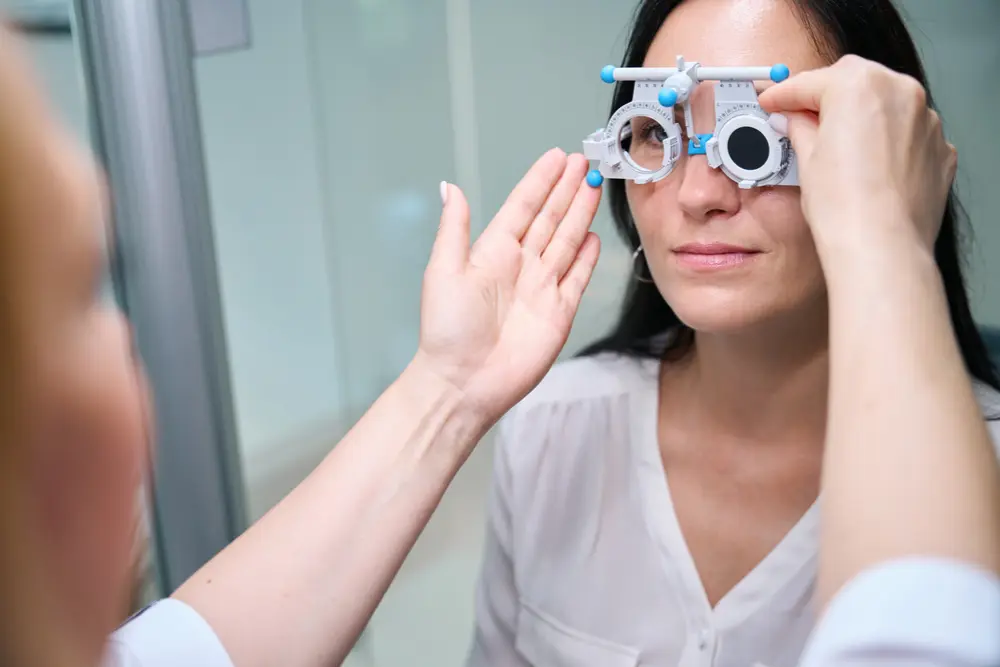Scleral contact lenses are a life-changing technological advancement for many individuals with complex eye conditions. Named for their placement on the sclera—the white part of the eye—these lenses vault over the cornea and create a fluid reservoir that promotes comfort and healing.
While scleral lenses are often seen as an upgrade over traditional contact lenses, they are especially valuable for individuals with specific medical conditions. In this article, we explore the various scenarios in which scleral lenses can provide therapeutic or visual benefits.
Keratoconus
One of the most well-known uses for scleral lenses is in the treatment of keratoconus, a condition in which the cornea thins and bulges into a cone shape. This irregular shape distorts vision and causes progressive nearsightedness and astigmatism. Traditional contact lenses often fail to correct the irregularity, but scleral and mini scleral lenses arch over the cornea, allowing a fluid reservoir to fill in the distortion and restore clear vision.
Scleral lenses are ideal for patients at various stages of keratoconus, including post-surgical recovery or corneal transplant cases. Learn more about the available keratoconus treatment methods.
Dry Eye Syndrome
Chronic dry eye syndrome can severely affect comfort and clarity of vision. In moderate to severe cases, patients may experience burning, irritation, blurred vision, and contact lens intolerance.
Scleral lenses for dry eyes are often the preferred solution due to their fluid-filled reservoir that protects and hydrates the eye surface throughout the day.
For patients with Sjögren’s syndrome, neuropathic dryness, or meibomian gland dysfunction, large-diameter scleral lenses offer consistent moisture and relief. Discover the advanced dry eye treatments available at our clinic.
Stevens-Johnson Syndrome
This rare but severe reaction causes inflammation and scarring on the mucous membranes, including the eye surface. Patients often struggle with extreme sensitivity and chronic damage. Custom scleral lenses act as a shield, promote hydration, and support healing—making them one of the few long-term solutions for managing ocular complications from this condition.
Ocular Burns and Trauma
For eyes that have experienced chemical injuries, burns, or trauma, scleral lenses offer both protection and rehabilitation. The fluid reservoir they create prevents further dehydration and discomfort while supporting corneal healing.
This protective feature also helps smooth the optical surface, restoring vision in cases where corneal irregularity remains after injury.
Sjögren’s Syndrome
As an autoimmune disease that disrupts the production of natural tears, Sjögren’s syndrome leads to severe dryness and discomfort. Patients who struggle to blink properly or close their eyelids fully benefit greatly from scleral lenses, which ensure continuous hydration and protect the delicate corneal tissue.
Neurotrophic Keratitis
In degenerative or genetically inherited corneal conditions like neurotrophic keratitis, scleral lenses restore hydration and enhance vision by correcting irregular astigmatism. For these patients, the lenses are both a visual aid and a therapeutic device.
Conclusion
Scleral lenses have revolutionized modern eye care. Whether you’re dealing with keratoconus, dry eyes, post-surgical complications, or autoimmune disorders like Sjögren’s, these lenses offer personalized comfort and visual clarity.
At MyClinic, our keratoconus and dry eye specialists use advanced imaging and fitting technologies—including EyePrintPRO and BostonSight Scleral Lenses—to deliver unmatched precision and support.
If you’re looking for effective solutions and tailored recommendations, visit us in Jerusalem and explore the world of personalized scleral lens therapy.

